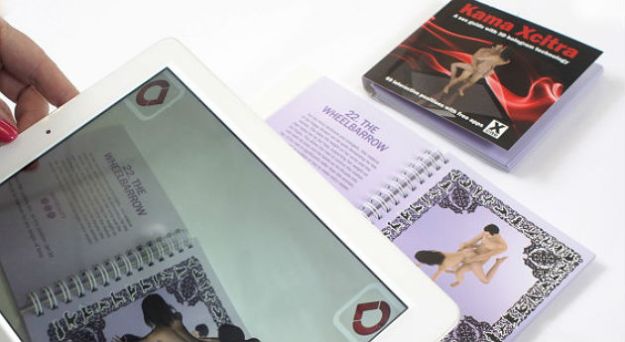 If there’s one thing that’s been crying out for a state of the art, contemporary technological revamp, the answer’s obviously Kama Sutra. After all, what says “classic work on human sexual behavior, believed to have been written more than two thousand years ago” more than “mobile app with 3D hologram figures having sex right in front of your amazed eyes?”
If there’s one thing that’s been crying out for a state of the art, contemporary technological revamp, the answer’s obviously Kama Sutra. After all, what says “classic work on human sexual behavior, believed to have been written more than two thousand years ago” more than “mobile app with 3D hologram figures having sex right in front of your amazed eyes?”
That’s the reality of the Kama Xcitra – yes, that’s the real name of the updated book – and it’s far less exciting than it may seem. Advertised as “a sex guide with 3D hologram technology” that demonstrates 69 interactive positions – again, yes, they’re playing with the number 69 because apparently this product was designed with sniggering foremost in mind – the actual product is a book filled with Augmented Reality-ready images offers up little CGI figures when you use the proprietary app with your iPad’s camera to demonstrate selected positions.
According to Hazel Cushion, managing director of Xcite Books, the publisher of the Kama Xcitra, the newly updated and animated version of the classic work is there for purely educational reasons. “For more than two thousand years couples have turned to the Kama Sutra for advice and guidance on how to have a fulfilling love life,” she explained, “but some of the more challenging positions like the Prone Tiger, the Catherine Wheel or the Peg have left readers a little baffled. That is, until now.”
The format of the animation via Xcitra allows the curious to essentially “rotate” the copulating couples to get a better idea of exactly where each limb and extremity goes in every position featured. The AR app places 3D renderings of the figures on top of the illustration in question, allowing – as Cushion put it – “the viewer [to move] their mobile device around to appreciate the position from all angles.” She continues, “as a result, each position becomes clearer, finally solving the problem of where to put that awkward elbow.”
Ah, yes, that “awkward elbow.” After two thousand or so years since the Kama Sutra emerged, it never seemed like people had too much problem figuring out whether they had an elbow too many. But remember, the AR isn’t the only new benefit that this updated edition offers the sexually curious: Users can also choose to customize the look of the models, allowing them to select skin and hair color, as well as the chance to add a soundtrack to the animations. Bom chicka wah wah.
We could only wonder if the original scholars from the BC era would ever approve.


